- You are here:
- Home »
- What to Eat? »
- Banh Chung – a traditional dish that foreign visitors should try when visiting Vietnam during the Lunar New Yea
Banh Chung – a traditional dish that foreign visitors should try when visiting Vietnam during the Lunar New Yea
Its preparation and consumption embody the spirit of family, gratitude, and respect for ancestors, making it a must-try dish for foreign visitors during Tet.
The Meaning of Banh Chung
Banh Chung has profound significance related to Vietnamese mythology and culture. It is believed to be inspired by the story of Lang Liêu, a prince of the sixth dynasty who wanted to create a dish that honored his father, King Hung Vuong. He designed Banh Chung to represent the earth, a square shape that symbolizes stability and the ground beneath us. In contrast to Banh Tet, a cylindrical rice cake, Banh Chung reflects the importance of the earth in Vietnamese culture.
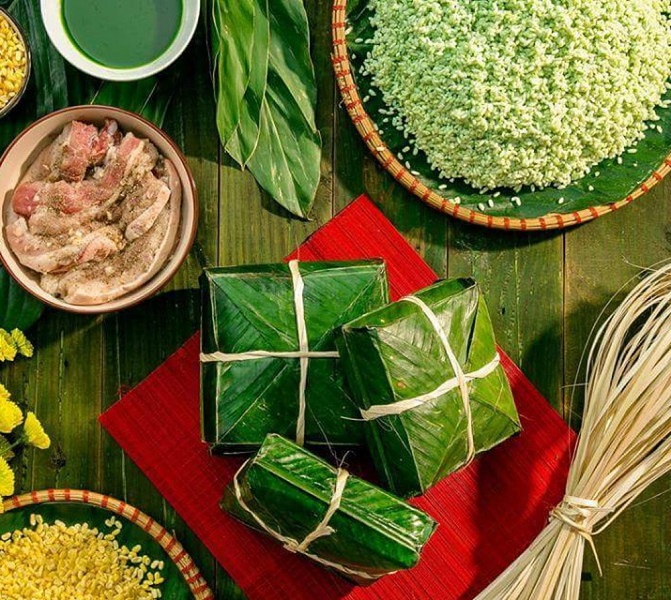
The ingredients used to make Banh Chung also hold symbolic value. The sticky rice represents the cycle of life and fertility, green beans signify nourishment and prosperity, and pork shows the richness of the harvest. These elements come together to create a dish that reflects the values of family, unity, and gratitude, especially during the time of Tet when families gather to celebrate and honor their ancestors.
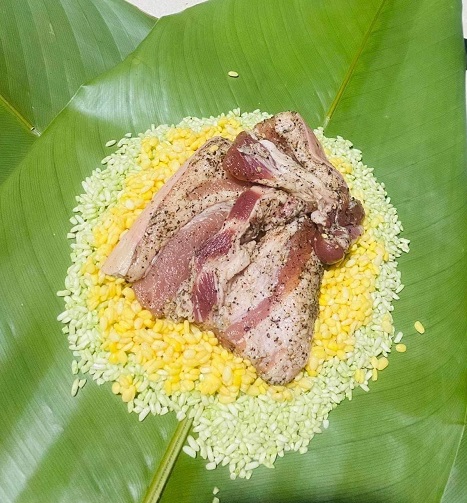
How to Make Banh Chung
The process of making Banh Chung is labor-intensive but rewarding. It typically involves several steps:
Ingredients: Sticky Rice, Green Beans (peeled and soaked), Pork (preferably fatty cuts, such as pork belly), Dong Leaves: Fresh (typically green, for wrapping), Salt (to taste), Pepper (to taste), Cooking String (for tying the cakes)
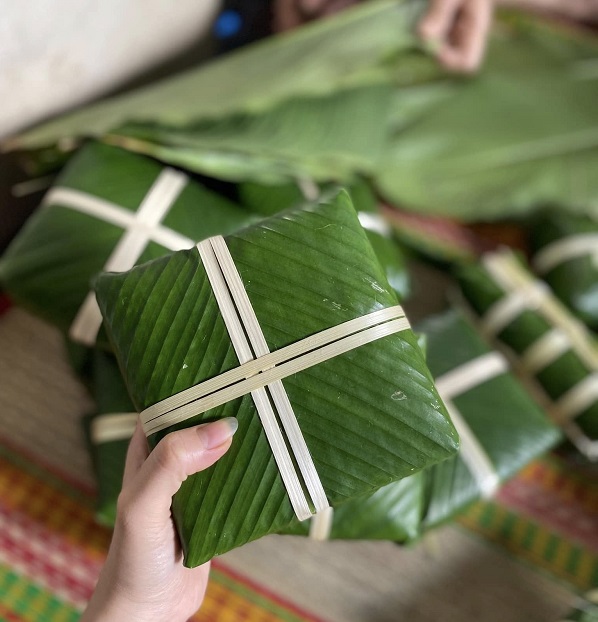
Preparation Steps:
- Soak the rice and green beans: The sticky rice should be soaked in water for 6-8 hours or overnight. Similarly, soak the green beans for a few hours until soft.
- Prepare the Pork: Cut the pork into small pieces, marinating them with salt and pepper for flavor. The dish traditionally uses both lean and fatty parts to balance taste and texture.
- Prepare the green bean xixture: Steam or cook the soaked green beans until soft, then mash them into a smooth paste. This paste will form one of the key layers inside the Banh Chung.
- Prepare the dong leaves: Cut the dong leaves into pieces about 30 cm x 30 cm for wrapping. If they are fresh, it may help to briefly pass them over an open flame or boil them to make them more pliable.
- Assemble the Banh Chung: Place two layers of dong leaves on a flat surface. Start by spreading a layer of sticky rice on the leaves, followed by a layer of green beans, then a layer of marinated pork, and top it with another layer of green beans and sticky rice. Fold the dong leaves tightly to form a square shape, ensuring all the filling is enclosed.
- Boil the Banh Chung: Place the wrapped cakes in a large pot of boiling water, ensuring they are covered with water. Boil for about 6-12 hours, depending on the size of the cakes. Check periodically, adding more water as needed to ensure they remain submerged.
- Cool and Serve: Once cooked, allow the Banh Chung to cool. They can be stored in the fridge or served immediately.
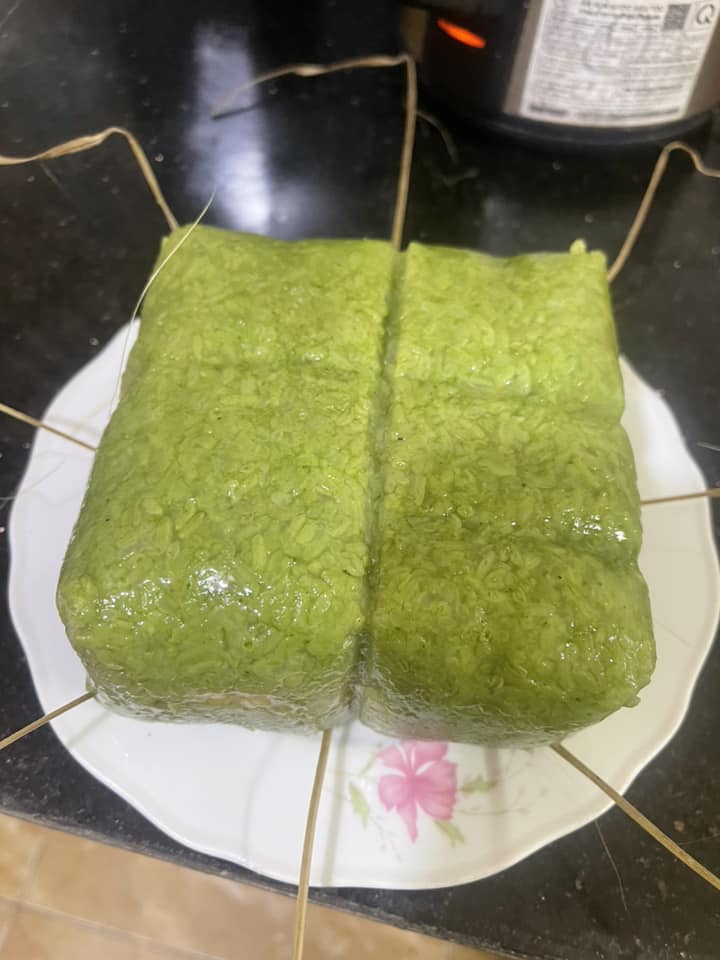
How to Enjoy Banh Chung
Banh Chung is best enjoyed in several ways. Traditionally, it is sliced into squares and served at room temperature. Foreign visitors can savor Banh Chung plain or with accompaniments. Here are some suggestions for enjoying this flavorful dish:
- Accompaniments: Pair Banh Chung with pickled vegetables or fresh herbs to complement the rich, savory flavor. The acidity of pickled vegetables balances the dish beautifully.
- Dipped in Soy Sauce: Some prefer drizzling Banh Chung with a bit of soy sauce to enhance its flavor profile.
- Breakfast or Snack: Banh Chung can be eaten as a breakfast item or snack throughout the Tet holiday. Its nutritional value makes it a fulfilling meal during the festive days.
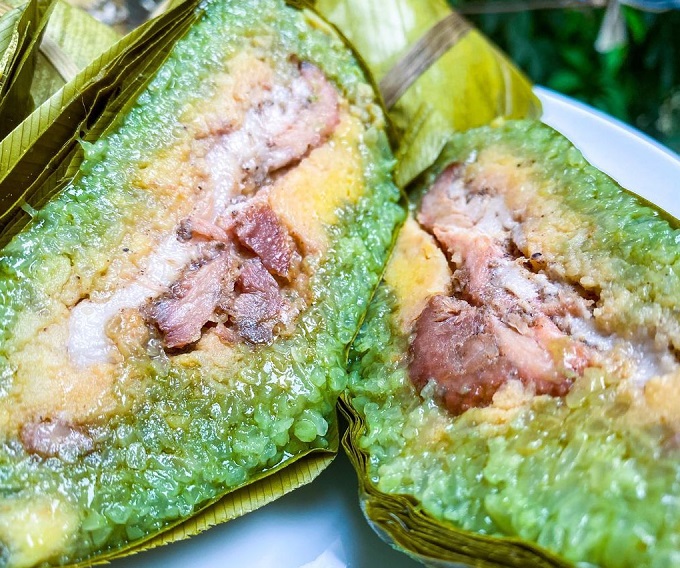
In conclusion, Banh Chung is more than just a traditional dish; it is a reflection of the Vietnamese spirit, culture, and values, especially during Tet. Its rich flavors, cultural meanings, and communal preparation make it a standout culinary experience for foreign visitors. As you explore Vietnam during the Lunar New Year, indulging in Banh Chung will undoubtedly deepen your connection to the country’s heritage and festive spirit.
Thanh Tuan
About the Author Sapa Tourism Office
Popular posts

